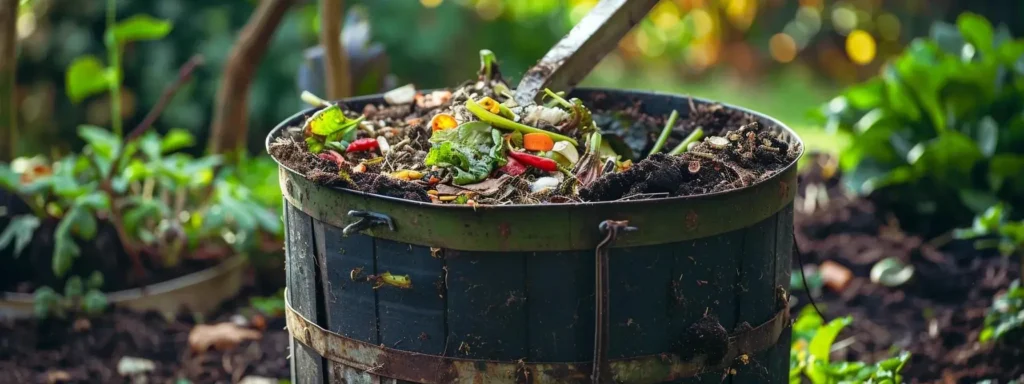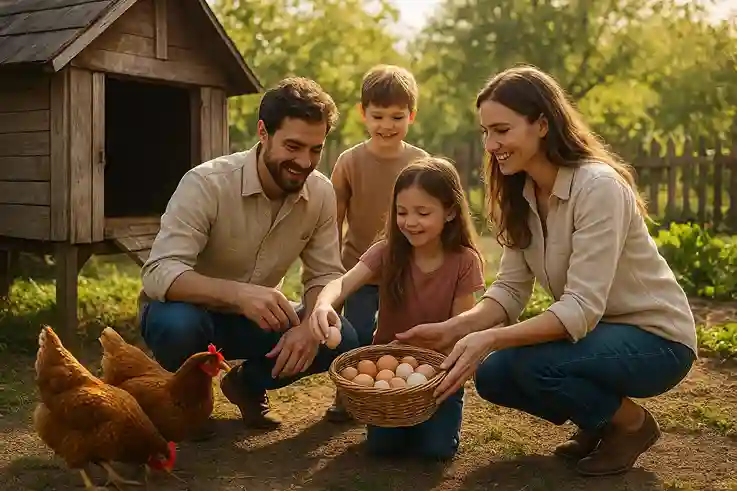Fall in Love with Zero-Waste Farming Again
Modern farming often means heavy inputs, rising waste, and environmental strain. But zero-waste farming flips that script—making every crop, byproduct, and natural resource count. It’s not just a trend—it’s a return to thoughtful, sustainable agriculture that’s both profitable and fulfilling.
Whether you’re a seasoned grower or just starting out, this guide will help you fall in love with zero-waste farming again—by showing how to turn waste into value, and stress into sustainability.
♻️ What Is Zero-Waste Farming?
Zero-waste farming is a holistic approach to agriculture that minimizes or eliminates waste at every stage of the farming process. It includes:
- Using crop residues and food waste as compost or animal feed
- Recycling water and nutrients through integrated systems
- Repurposing byproducts for new revenue streams
- Reducing dependence on synthetic inputs
At its core, it’s about creating closed-loop systems where every resource is reused, nothing goes to waste, and everything serves a purpose.
❤️ Emotional and Environmental Benefits
Farming is more than just a job—it’s a way of life. Zero-waste farming reconnects farmers with that purpose by:
- 🌎 Protecting the Earth – Healthier soil, less pollution, and lower emissions
- 🌾 Restoring Soil Health – Compost and cover crops build stronger fields
- 💧 Saving Water – Smart irrigation and reuse reduce water loss
- 🧘 Reducing Stress – Simpler systems mean less reliance on external inputs
- 💚 Creating Purpose – Farmers know their work directly benefits the planet
🛠️ How to Practice Zero-Waste Farming on Your Land
There’s no need to change everything at once. Begin with these simple, practical strategies to reduce waste and make a meaningful impact:
1. Compost Everything You Can
Turn kitchen scraps, crop residues, and manure into rich organic fertilizer.
2. Use Cover Crops and Crop Rotation
Reduce erosion, suppress weeds, and restore nutrients naturally.
3. Feed Animals with Leftovers
Many food scraps and byproducts can be safely used as animal feed.
4. Harvest Rainwater
Capture and reuse rainwater to reduce irrigation costs.
5. Turn Waste into Income
Sell compost, mushroom spawn, worm castings, or even handmade products from ag waste.
🧠 Real-Life Examples
1. A small organic farm in Oregon uses vegetable waste to feed chickens and turn manure into compost—cutting fertilizer costs by 80%.
2. In India, zero-waste rice farming combines duck and fish integration for pest control and nutrient cycling.
3. Urban microfarms reuse hydroponic water and repurpose plant trimmings as mulch—creating self-sustaining systems on tiny plots.
These stories prove that zero-waste farming works, no matter your scale.
💸 Can Zero-Waste Farming Be Profitable?
Yes—and increasingly so.
By reducing input costs, increasing soil fertility, and tapping into eco-conscious markets, zero-waste farmers often see higher long-term profits. Many consumers are even willing to pay more for sustainably grown food. You can also apply for government grants that reward regenerative and zero-waste practices.
✅ Quick Checklist: Getting Started with Zero-Waste Farming
- Start composting all organic waste
- Review your farm’s waste points and repurpose where possible
- Create a crop rotation and cover cropping plan
- Reduce single-use plastics and packaging
- Share your journey with customers—transparency builds trust
💬 Final Thoughts
Zero-waste farming isn’t just good for the earth—it’s good for your heart, your wallet, and your future. As the demand for sustainable food grows, farmers who embrace zero-waste practices are leading the way in creating a cleaner, smarter, and more connected agricultural future.
So if you’ve felt burned out or disillusioned by modern farming, this is your sign to return to the roots. Fall in love with zero-waste farming again—and watch your soil, your soul, and your harvest thrive.
❓ FAQ
Q1. What is zero-waste farming?
A: Zero-waste farming is an eco-friendly agricultural approach that minimizes waste by reusing organic matter, recycling water, and repurposing farm byproducts. It’s about creating closed-loop systems where nothing is thrown away.
Q2. Can zero-waste farming work on a small farm?
A: Absolutely. Zero-waste farming is scalable. Small farms can compost kitchen waste, use rainwater harvesting, and reuse crop residues to cut costs and boost sustainability.
s it expensive to start a low-waste or sustainable farm?
A: No. Many zero-waste farming practices, like composting or using natural fertilizers, actually reduce costs. You can start small and gradually scale as you see results.
What are the main benefits of reducing waste in farming?
A: Benefits include healthier soil, lower input costs, reduced environmental impact, better crop yields over time, and increased consumer appeal for sustainable products.
What crops work best in a low-waste or sustainable farming system?
A: Almost all crops benefit from zero-waste farming, especially those grown in rotation—like vegetables, legumes, grains, and even fruit trees. The key is soil health, not the specific crop.
Do sustainable farming practices qualify for government support?
A: Yes. Many governments (including the USDA) offer grants and incentives for farmers practicing sustainable or regenerative agriculture, which overlaps with zero-waste farming.

Silvia Heart is a lifestyle and wellness writer with a background in apparel and a degree in fashion. She blends creativity with practical insights, guiding readers toward intentional, balanced living. Through her approachable style and thoughtful storytelling, Silvia inspires her community to embrace both everyday joy and personal growth.


